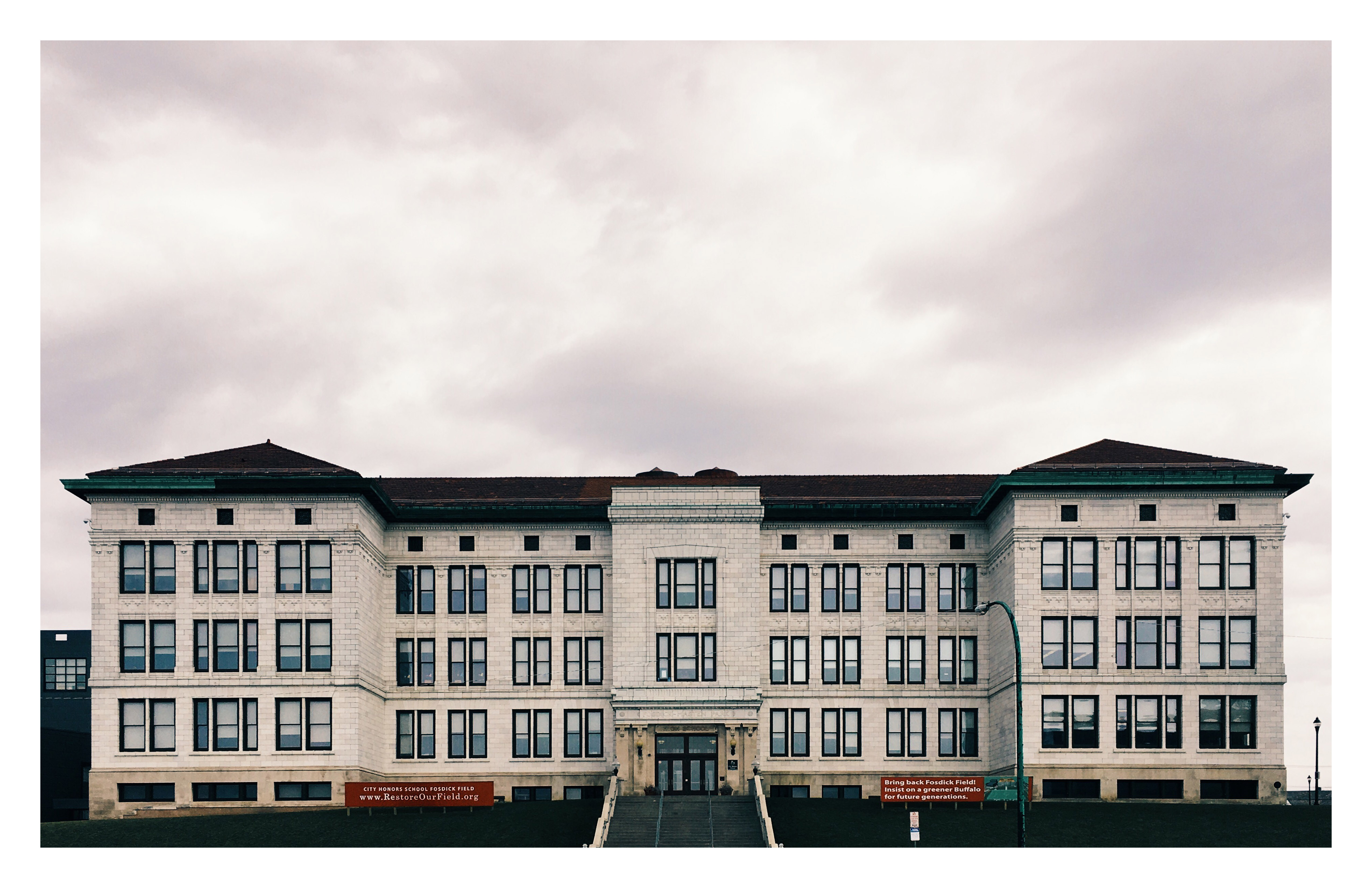Children and parents in impoverished families are often left in the dark on the entire criteria school application process.
By Jason Zwara
With a 98% graduation rate, nearly every City Honors graduate goes on to college, many to some of the country’s best universities. For that reason, City Honors and other top tier schools in Buffalo are highly sought aft er by students from high and low-income families. Unfortunately, for students from low-income families, especially those with parents who are unfamiliar with the application process to the city’s top tier elementary, middle and high schools, the odds are not in their favor.Until the application process is made more accessible for low-income families and the massive seat shortage at high-performing schools is addressed, too many students, especially those most in need, will be left without quality schooling options – a cyclical problem that punishes students for the circumstances they were born into and compounds the issue of poverty in our city.
Buffalo’s Criteria Schools
Of the 54 schools and campuses in the district, ten place additional criteria, beyond just an application, on enrollment. High schools in particular utilize admissions criteria, with seven of the 16 high schools in the Buffalo Public Schools district requiring additional enrollment requirements, differing from school to school. Th ey range from reserving seats for specific neighborhoods, to conducting interviews (Middle Early College), to requiring portfolios of work or auditions (Performing Arts), to administering cognitive-ability exams (Hutch Tech, City Honors, Olmstead).
Unsurprisingly, these criteria schools are the highest performing and most in-demand. Thousands of students are denied admission each year – the acceptance rate across all criteria-based schools is lower than 50%. At the city’s top-tier schools, the acceptance rate is far lower. Last year, for example, 2,400 students applied for open seats at City Honors. 154 were accepted.

Application Process is Insider Knowledge
The application and enrollment process itself creates many of the barriers for low-income and high-needs students. In parent surveys conducted in 2015 by the UCLA Civil Rights Project, huge portions of parents found the application process confusing and difficult. According to the surveys, teachers agree that information about the application process is a major barrier, and they also think their schools aren’t doing enough to assist students in applying. Only 21% of surveyed teachers believe their schools provide students “a lot” of information about criteria schools. Many teachers also admitted that they themselves knew little about the admissions process for criteria schools.
Schools, especially non-criteria elementary schools, and the district do not do enough to assist families trying to navigate the system.
The information gap is vast: among families who did not apply, 60% knew nothing about the process; over two-thirds weren’t aware of the entrance exams or other academic-based criteria. Even among those who did apply, 46% reported they found the process complicated and difficult.
If a student attended one of the six criteria-based elementary schools, their acceptance rate to a criteria-based high school jumps to over 90%. On the other hand, there are barriers for many students, especially English language learners, students with disabilities and low-income students, each of which are vastly underrepresented in criteria schools. The income gap is glaring: low-income students are 85% of non-criteria schools compared to only 57% of the population in criteria schools.
This is partly due to a failure on the district’s part to communicate. Parents and students, particularly among those who did not apply to a criteria school, reported that their primary source of knowledge about school options came from friends and neighbors and, to a lesser degree, school personnel. These parents do not seem to be a priority for the district. Indeed, a significant number (30%) of parents reported that they were unsatisfied with the information from the district about the admissions process. Nearly 20% of families that did not apply to a criteria school reported receiving no information at all from the district about the process.
The admissions exams, required for the most in-demand schools, are an additional barrier. First, parents and teachers alike believe the admissions exams hold too much weight in admissions, at the cost of more qualitative factors, such as teacher recommendations or portfolios of student work. Second, simply sitting for the exams seems to intentionally exclude certain students. Olmsted and City Honors off er their exam once per year, in one location, early in fourth grade, and early in eighth grade. Hutch Tech requires a different exam, on a different day, in a different location also be taken early in eighth grade. Students can request in advance to take the exam at their current school, but once again, only the students and parents well-versed in the process can take advantage of it. With many families unfamiliar with or confused by the criteria school application process, a huge disparity of access clearly exists.
Reforming the application system, and doing a better job of informing both students and parents of their options and timelines is absolutely necessary to eliminate barriers that disproportionately prevent at-risk and high-needs students from enrolling in the city’s best schools.

Pending Improvements to Application Process, Still Too Few Seats
As one parent put it, “Before thinking about how to make access more equitable, there must be more seats available.” This seat shortage came through most clearly in 2015 when a growing number of students sought to exercise their federal right to request a transfer out of a “failing” school and gain a seat in a high-performing school. Nearly 1,200 students requested a transfer, and only 368 students actually received one, with the district denying most requests on the grounds that there simply weren’t enough seats. In a separate issue that illustrates this problem, there is a waitlist for charter schools in Buffalo with 3,922 students currently on it.
In the last two years, the district has made initial, tentative efforts to expand high-demand options, such as replicating Emerson, the district’s hospitality and culinary-focused school that has shown impressive graduation rate improvements in recent years. Small magnet programs have also been introduced in several non-criteria schools, but not enough has been done to expand or replicate the most in-demand schools. The district needs to dramatically increase the number of program replications and pilot programs it currently offers. It should also move away from placing small magnet programs within larger schools, which have shown to be less successful than stand-alone schools.
All survey figures come from the UCLA Civil Rights Project report, “Better Choices for Buffalo’s Students: Expanding & Reforming the Criteria Schools System.”
Want more from No Boundaries? Check out our podcast!
Episode 1 lives here, on iTunes and Stitcher. Please listen, subscribe, review, and enjoy.




